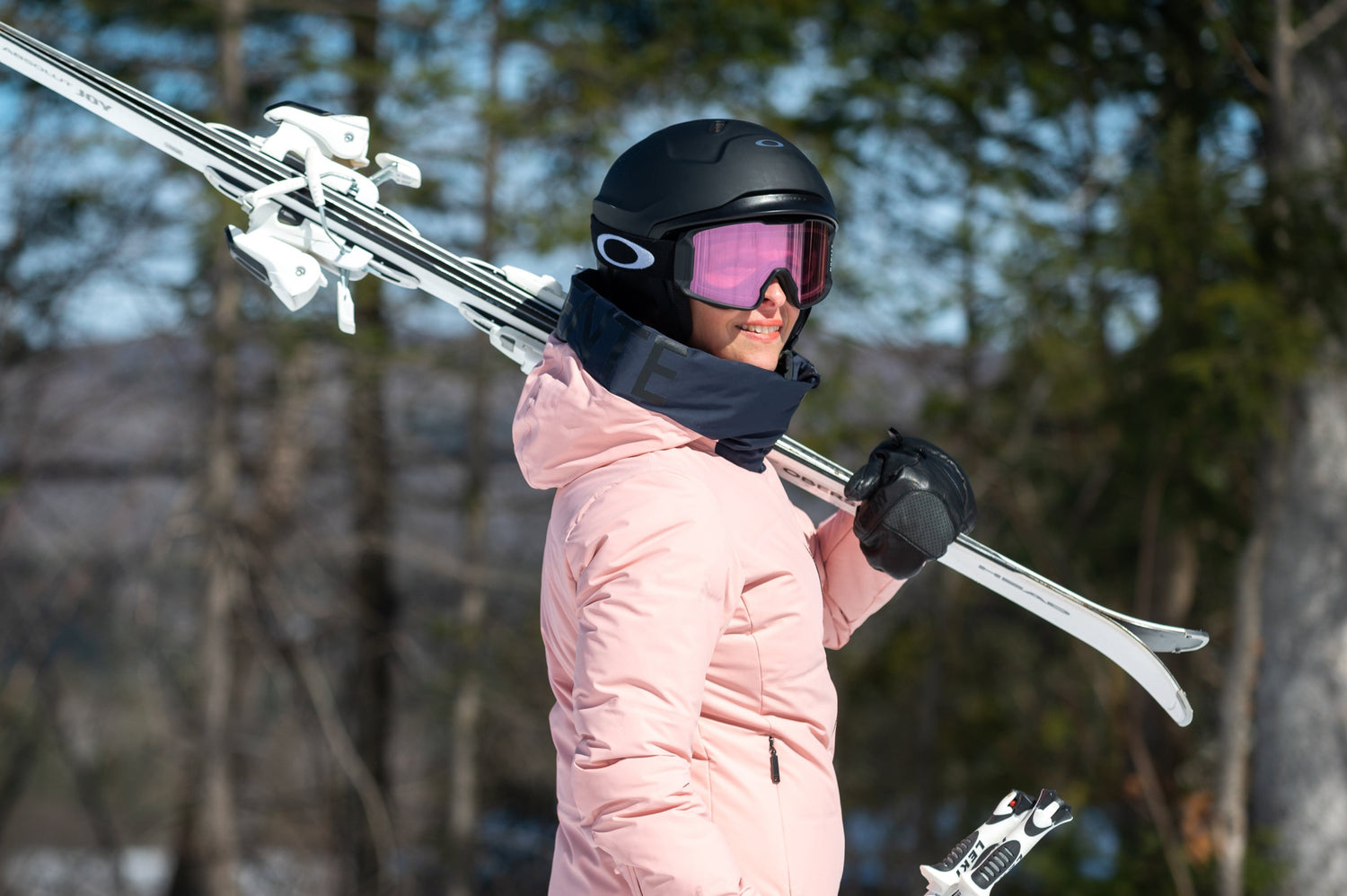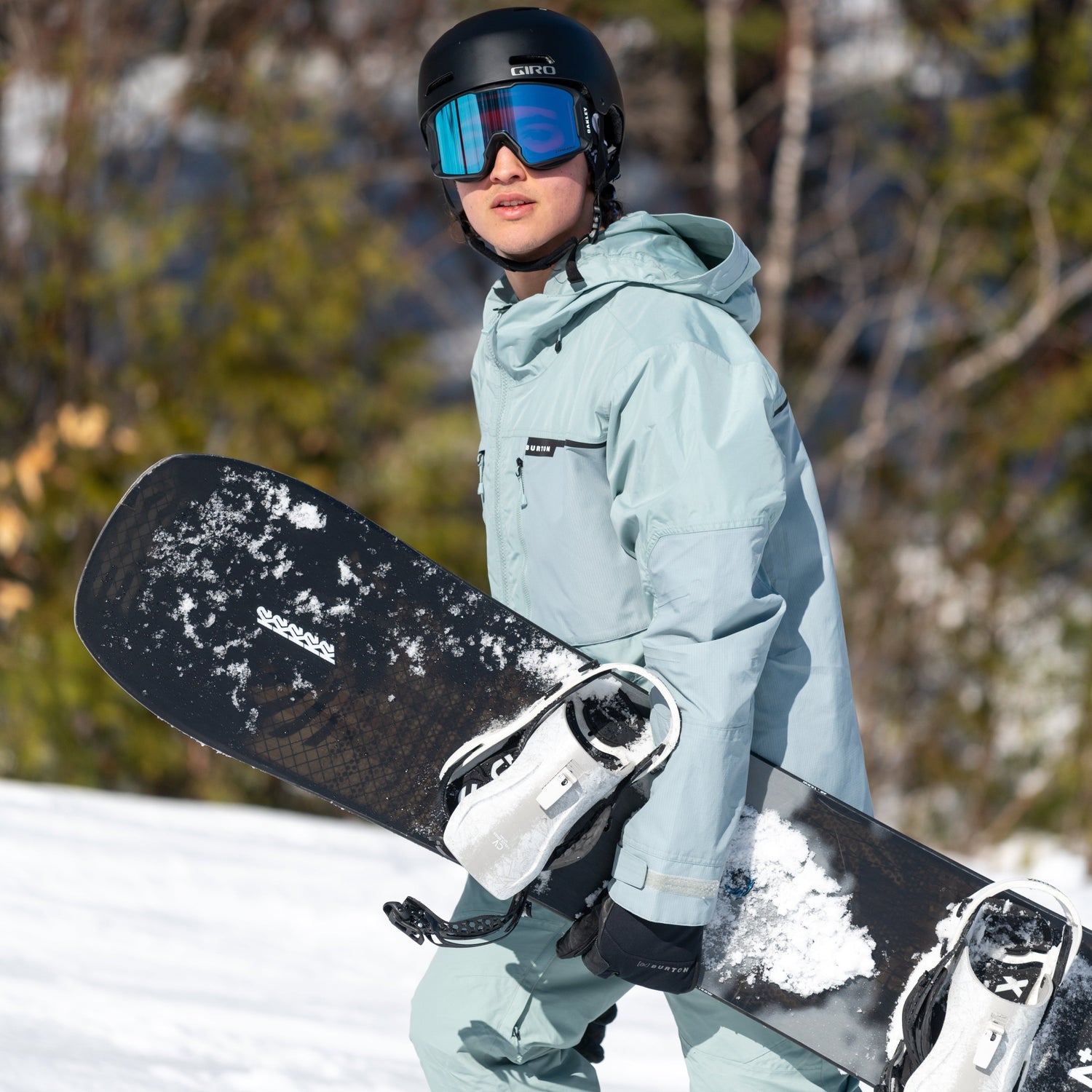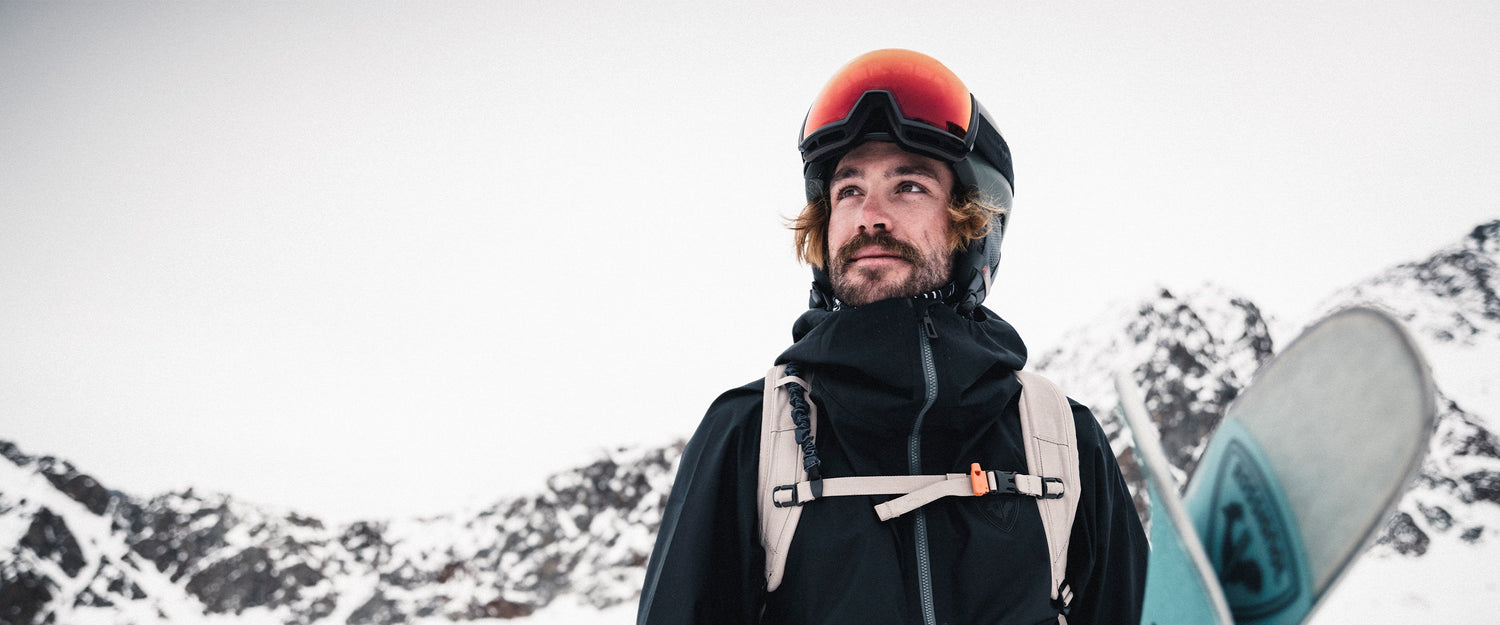1. Types of Helmets
A helmet’s mission is to protect your head against impacts during falls. Whether for downhill skiing or snowboarding, they have the same construction. However, there are different types of helmets, depending on the discipline.
- Piste helmets: Very versatile, adapted for all styles and budgets.
- Freeride ski helmets: For freeriding, choose a ski helmet with good ventilation. You may also want to consider some backcountry-oriented features, such as the RECCO system.
- Freestyle ski helmets: Helmets with a little more style!
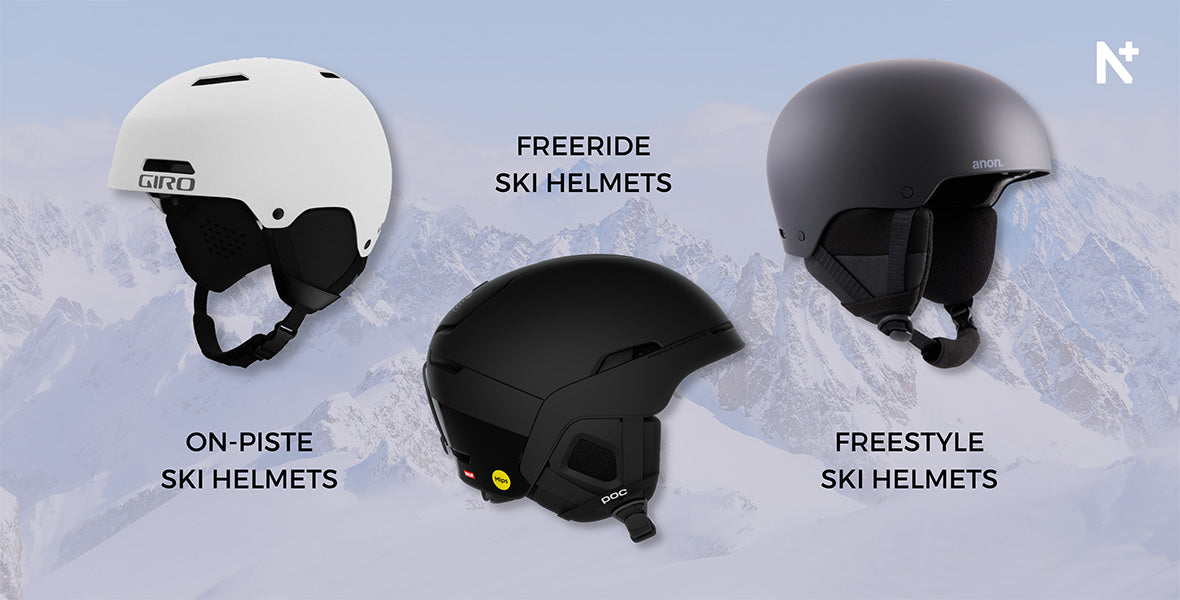
- Visor helmets: This type of helmet is ideal for people who need to wear prescription glasses when skiing. This type of helmet is equipped with a visor; in other words, an alpine ski lens that can be raised or lowered as needed. There are various kinds of lenses. Sometimes they are interchangeable and even photochromic, depending on the brand.
Visor helmets are perfect for piste skiers or children because you don’t have to deal with goggles.
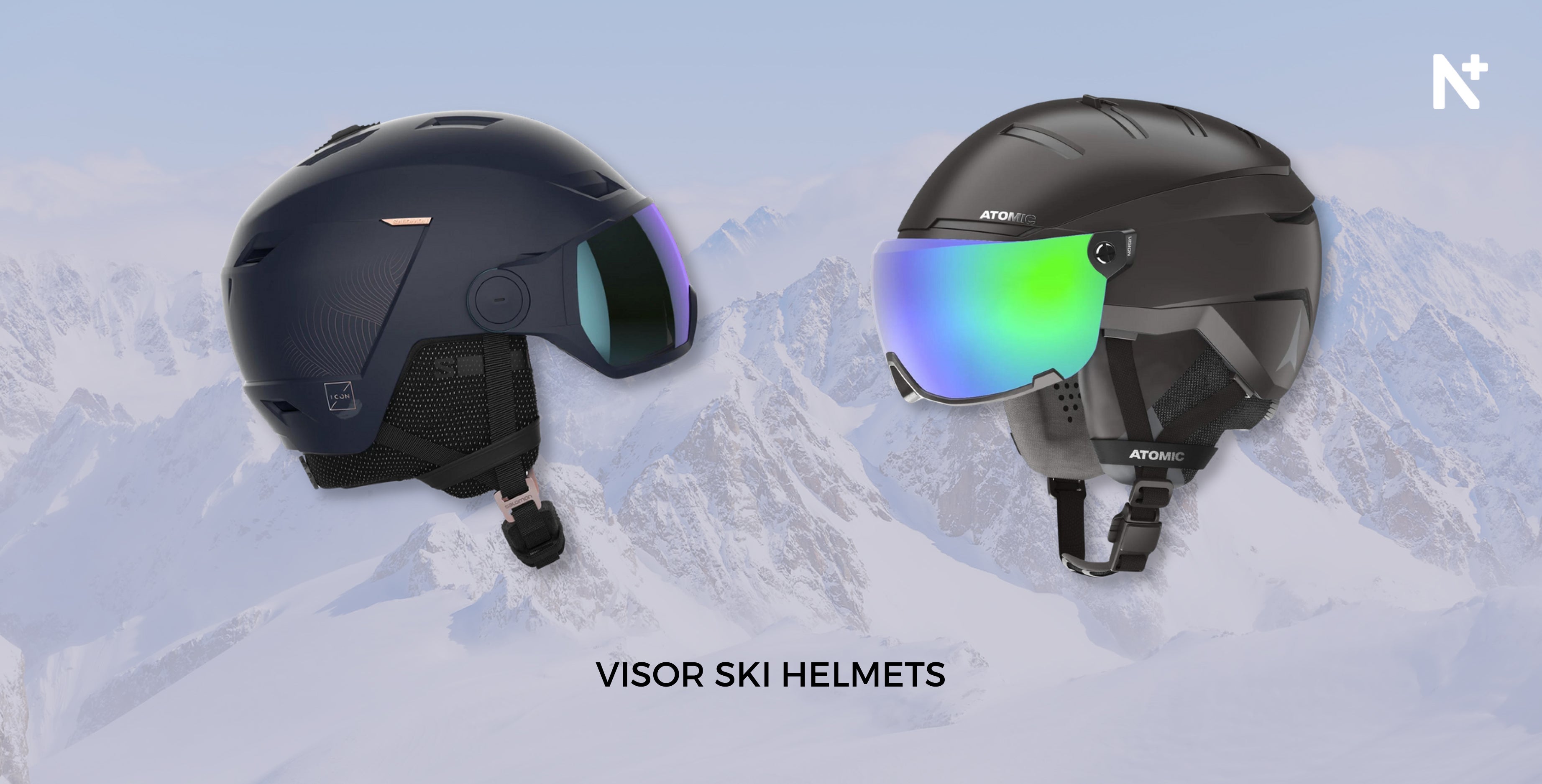
- Helmets for ski touring: Ski touring helmets are very light and well ventilated. Some models meet the safety standard for climbing and mountaineering.
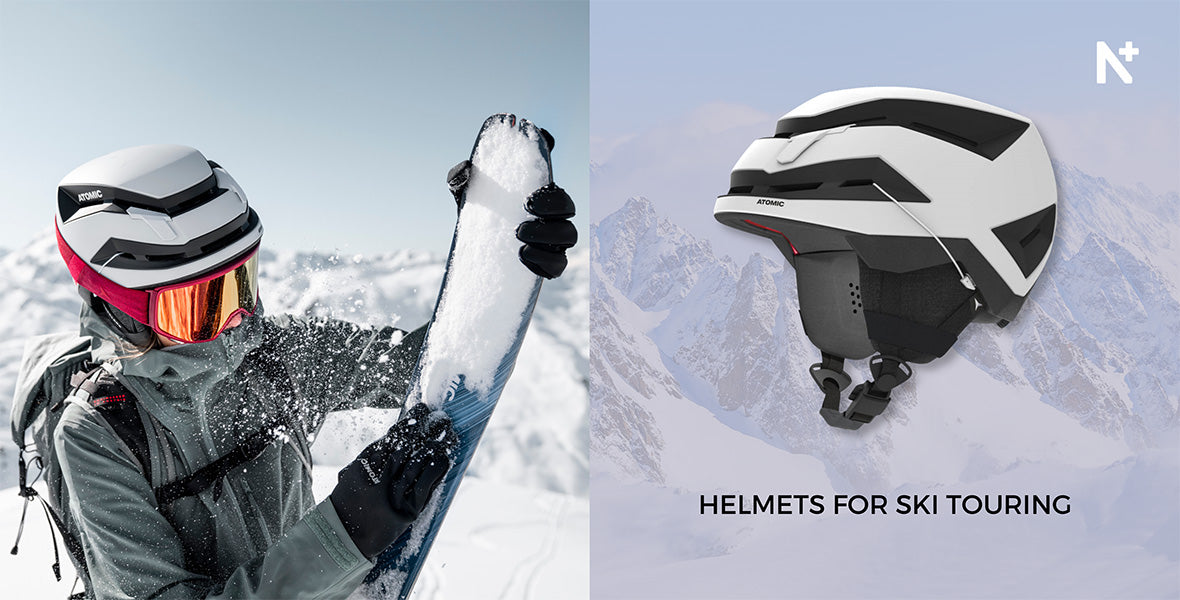
- Race helmets: Race helmets are designed to be more aerodynamic. Various aspects of race helmets are adapted to specific disciplines.
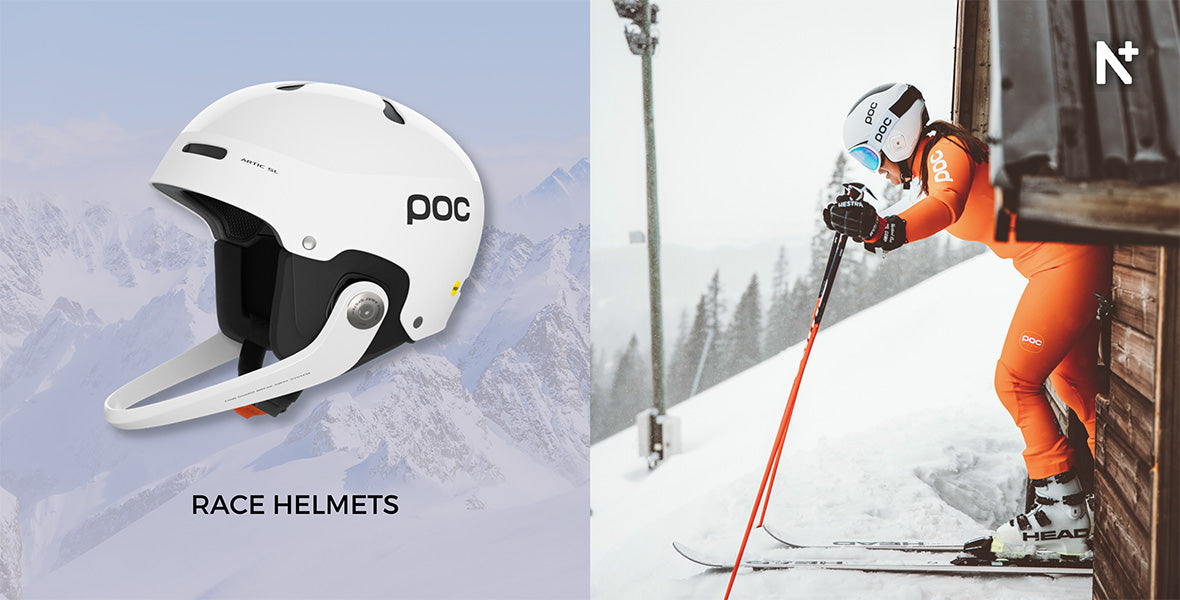
In addition, ski helmets generally fall into various categories:
- Men’s ski helmets
- Women’s ski helmets
- Adult or unisex helmets
- Kids’ ski helmets
2. How to Measure Your Head for a Ski Helmet?
To find the right size, you should measure the circumference of your head in centimetres.
How do you measure head size to figure out the right size for your ski helmet? Place a flexible measuring tape in the middle of your forehead, and go all the way around your head. The result usually varies between 48 cm and 65 cm for adults and 48 cm to 56 cm for children.
Then simply find the ski helmet size that matches the circumference you measured: extra small, small, medium, large or extra large. Keep in mind that the size associated with a given circumference varies from one company to another.

3. What Hat to Wear under a Ski Helmet?
There is no right or wrong answer. It’s all about comfort. However, a thin cap or balaclava is required under a ski helmet. If you prefer wearing a thicker cap, bring it with you when trying on a new helmet because what you wear will affect the fit.
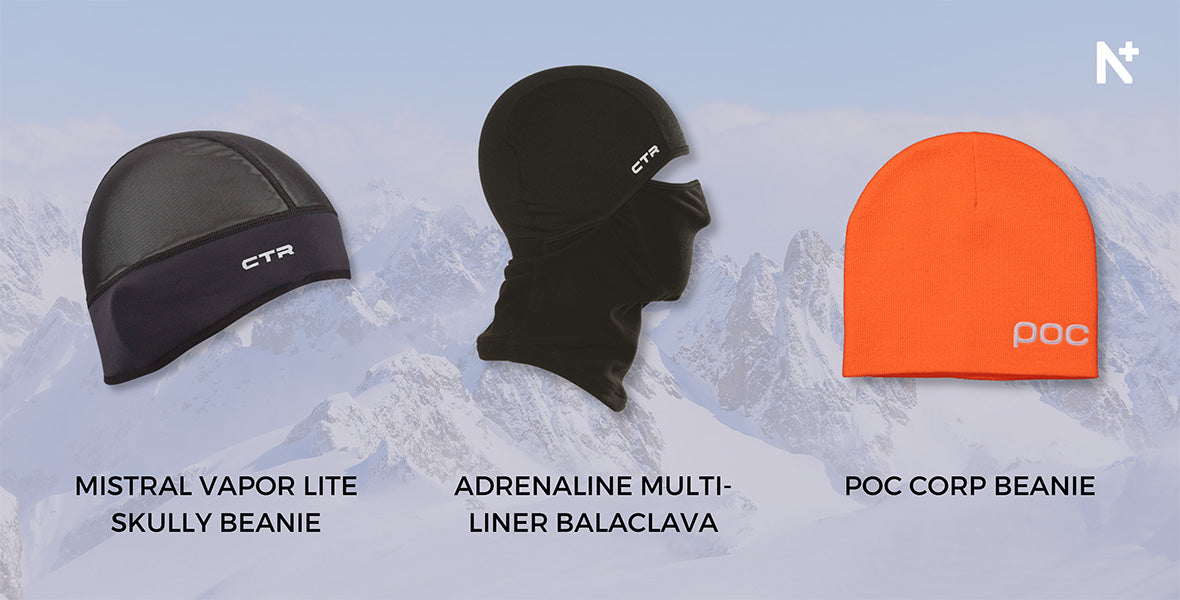
4. Ski Helmet Construction
A very important and sometimes overlooked aspect is the helmet’s weight. Why add weight when the goal is to spend long, enjoyable days in the mountains? The materials used in the design influence the helmet’s weight.
- ABS shell: These helmets are designed with a hard ABS plastic shell with EPS protective foam bonded to it. They are very durable but are heavier. Ski helmets with ABS shells are an excellent value.
- In-Mould Helmet: This lighter, compact construction is made from thinner plastic that is moulded directly onto EPS foam.
- Hybrid helmet: A construction that combines an ABS shell on the upper part of the helmet and an in-mould construction on the lower part. These helmets offer an outstanding weight-to-durability ratio.
- Helmet lining: The cushioned lining of a helmet does not necessarily add weight, but it affects your comfort level. Linings are sometimes removable so you can wash them.
- Mips Technology: This technology has been developed to provide protection against certain types of impacts, including those created by rotational movements of the head in the helmet during crashes.

5. Features to Look For
When choosing a ski helmet, some advanced features are worth considering. They can enhance your safety, comfort, and overall experience on the slopes.
- Bluetooth compatibility: Bluetooth systems let you listen to music while skiing or take calls on the chairlift.
- Camera mounts: Relive epic runs or share your adventures with friends by choosing a helmet equipped with a camera mount.
- Multinorm certification: For those who ski, bike, and climb, a helmet with certifications for multiple sports is a versatile choice that frees up space in your gear closet and goes easy on your wallet.
- Safety sensors: Some helmets now feature built-in impact sensors that can notify emergency contacts in the event of major impact. They’re especially helpful for keeping an eye on young skiers. Certain models can also remind you when it’s time to replace your helmet.
6. How to Adjust Your Ski Helmet?
Most helmets have an adjustment system usually provided by a dial wheel behind the neck.
When trying on a helmet, it’s crucial to position it halfway up the forehead. If it’s higher, it won’t properly protect you, and if it’s lower, you won’t have enough space for ski goggles.
- Step 1: Put the helmet on your head so that it’s stable. It shouldn’t slip down your forehead or neck when you move your head slightly.
- Step 2: Tighten the dial wheel snugly but not to the point that you feel any discomfort.
- Step 3: Adjust the helmet strap so that it stays in place when you move your head. You should be able to slide a finger between your chin and the strap.
Even when you have the right size, you may still feel pressure points. When this happens, you should change the model or company because the shell’s shape probably doesn’t work for you: it’s either too round or too elongated.
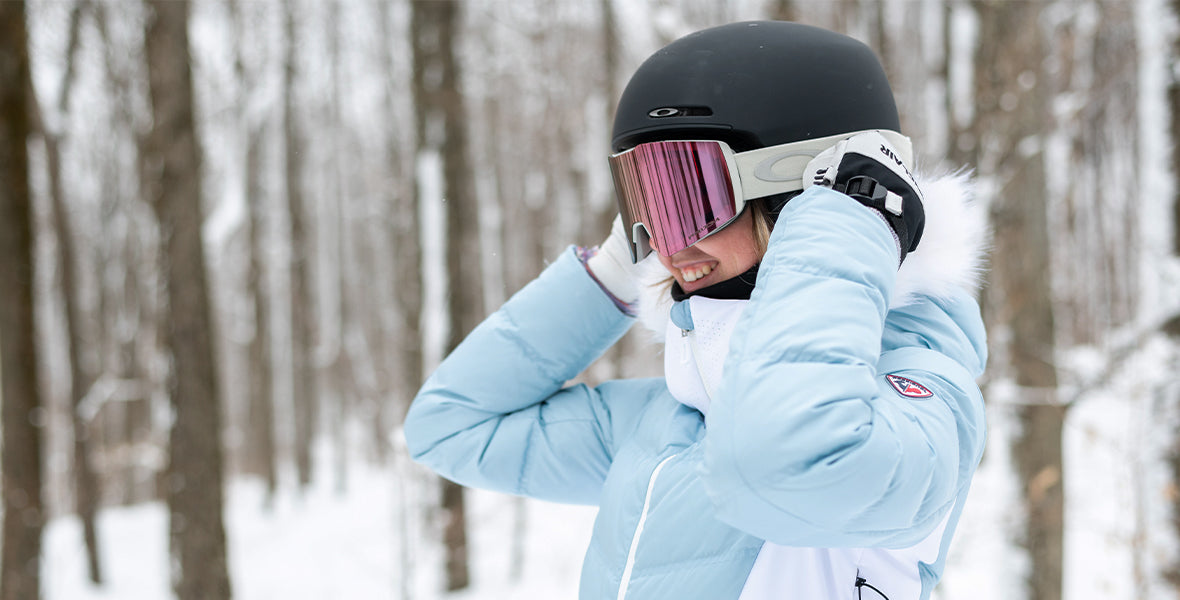
7. Ski Helmet Ventilation
Ventilation is a critical aspect of a ski helmet that helps you control your body temperature. Most helmets have a variable number of ventilation slots although some do not.
Some models let you adjust these ventilation slots; others don’t. If you tend to generate a lot of body heat or do a lot of spring skiing, it’s nice to be able to adjust how much air is coming in and out.
8. When to Replace a Ski Helmet?
No standard has been set for ski helmets’ lifespans. However, changing it every five years is recommended, depending on how often it has been used. EPS foam, whose mission is to absorb impacts, wears out over the years, which reduces performance.
One thing is clear: when you crash, you’ll need a new helmet, even if you see no trace of the impact.
In short, when choosing a helmet, it’s crucial to not only have the right size but also to be comfortable so you can enjoy the mountain to the fullest—and do so safely!
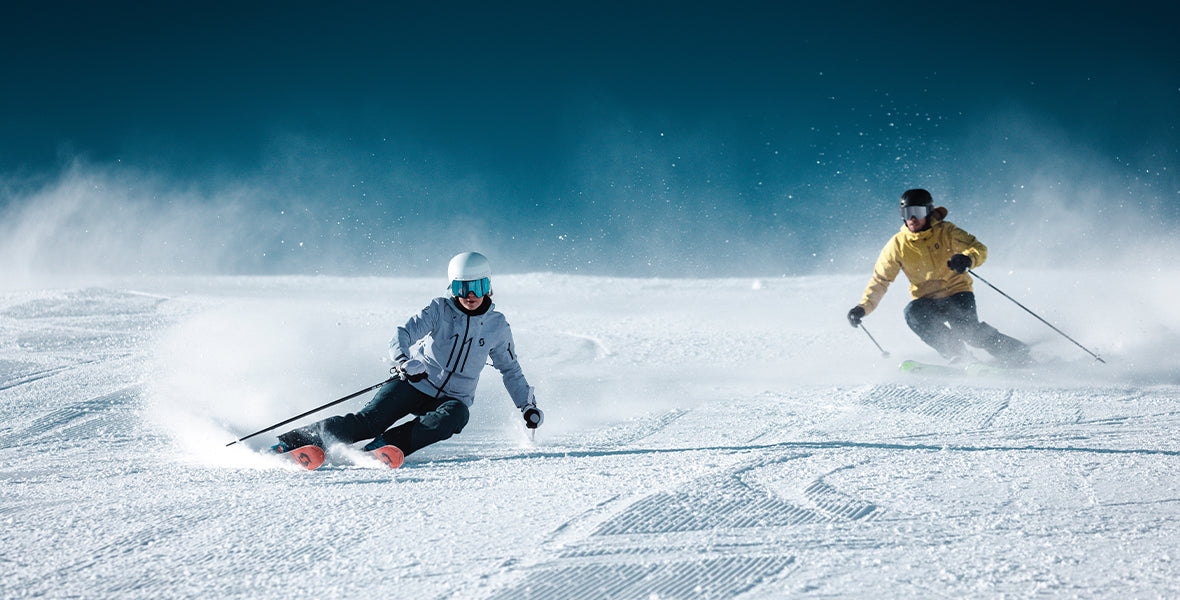
A Tip for Trying on a New Helmet
Bring your ski goggles when shopping for your new helmet. Some ski helmet and goggle models are not compatible, depending on their shapes. Ideally, the upper part of your goggles and the helmet fit together without creating a gap.
